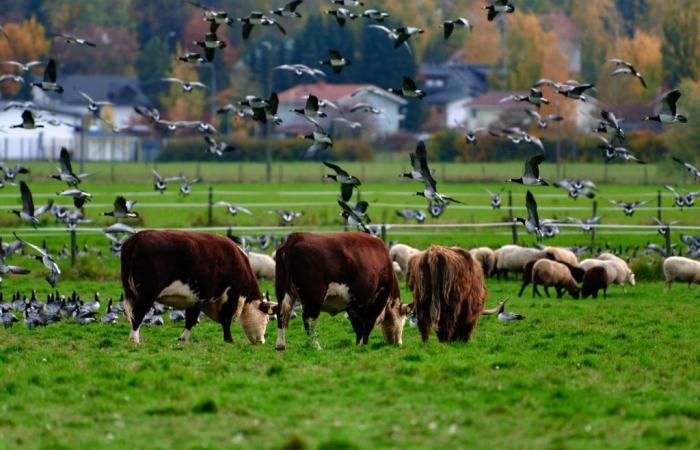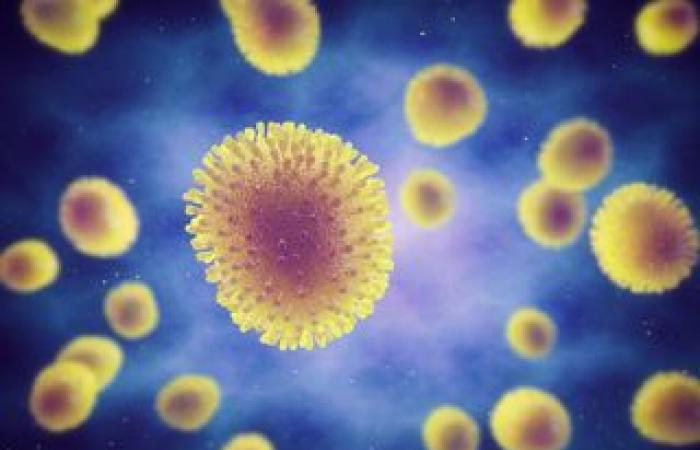Last week, cases of highly pathogenic avian influenza (or Highly Pathogenic Avian Influenza – IAAP) were announced by the Michigan Department of Agriculture and Rural Development (MDARD), in the United States.
The farm recently received cattle from an affected facility in Texas, before the herd showed any signs of illness – MDARD
According to authorities, cattle were asymptomatic at the time of transfer from Texas to Michigan. On March 26, IAAP had been found “in unpasteurized clinical samples of milk from sick cows in two dairy farms in Kansas and one in Texas“, according to USA Today.
Possible source of transmission
Currently, health authorities are investigating the possibility that wild migratory birds are transmitting the virus to other animals, such as mammalsas the presence of dead wild birds has been reported on these properties.
Bird flu: more than 5,000 birds die in Israel!

According to the Centers for Disease Control and Prevention (CDC), it is estimated that 82,048,806 birds were detected with IAAPbetween them, wild waterfowl, commercial birds and backyard flocks. The records started in 2022before that, the last detections were in 2016.
Some of these birds presented the IAAP A(H5N1) of clade 2.3.4.4which presents genetic modifications that can facilitate virus adaptation to infect mammals.
Spread among mammals
In a recent text for The Conversation, I commented and gave an overview of IAAP trajectory in 2022 across detections in mink farms, in Europe, in marine mammals, on the coast of South America and even in wild birds, in southern Brazil.
At the end of 2023, the cases observed in Latin America, in North American countries, including condors, an endangered species, and even in Antarctica, with the unprecedented detection in polar bearswarn of the need for global preparedness for possible outbreaks between different species, including our own.
Global Risk
Between March 22 and 28, 2024, the World Health Organization (WHO) received notification of one case of HPAI in humans in the western Pacific region. Between December 22, 2023 and February 26, 2024, 5 cases of IAAP in humans have been recorded.
According to the WHO document, the individual does not claim contact with dead or sick birds (despite having exposure to wild birds in his hometown) nor with anyone with similar symptoms.
In total, between January 1, 2003 and February 26, 2024, 887 cases of HPAI were reported in humans, in 23 countries. Of these 887, 462 diedleading to a estimated fatality rate at 52%.
There is still no record of sustained transmission between humanstherefore, according to the WHO, orglobal bait would remain low because of this. But sporadic cases, especially through contact with infected animalscan happen and bring risks.
Alerts and concerns
The IAAP is a highly contagious virusand can reach large geographic distancesfrom the transmission in migratory animals. The current main route of transmission is from the contact with infected animals and their secretions.
Although many human cases have occurred due to exposure to infected animals, there is suspicion of human-to-human transmission of this virusaccording to some examples from the CDC.
It is worth emphasizing that sustained human-to-human transmission has not yet been recorded.
The main concern is that, with adaptations that the virus can acquire when infecting different species, there is risk for the acquisition of those that can facilitate infection and sustained transmission between humans.
Butantan Institute will develop and produce a vaccine against bird flu in humans

That’s why, virus surveillance and their genomes, as well as of new cases in different species, including ours, is relevant. Still, the development of vaccines for humans and other animals is also fundamental, as preventive measure and to prepare for possible outbreaks.
The main question is not whether we will have an outbreak or epidemic of bird flu. AND whenwhether this will happen and whether we will be prepared for itconsidering current knowledge.
Tags: Find risks Avian Influenza detected dairy herds United States
--






